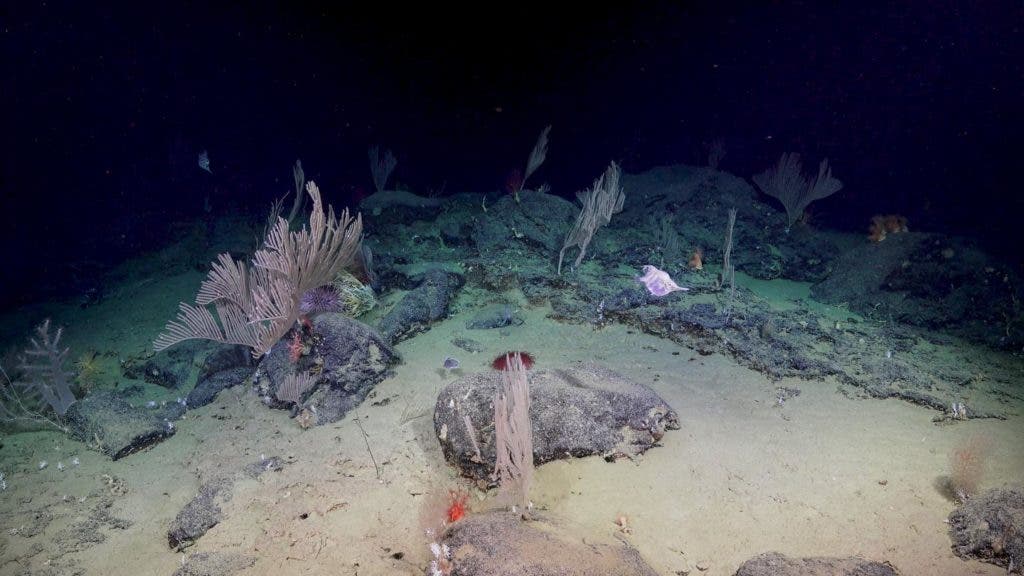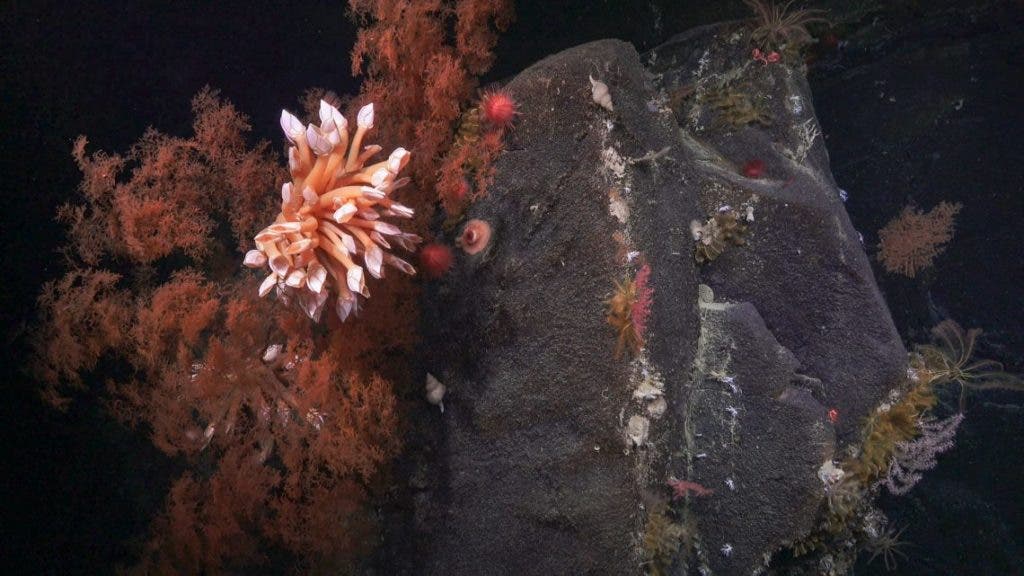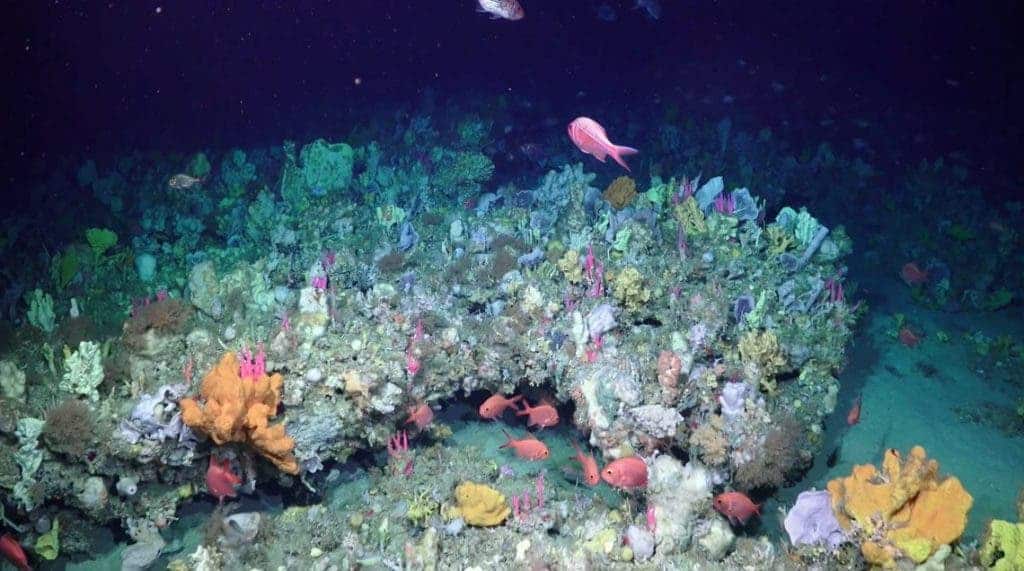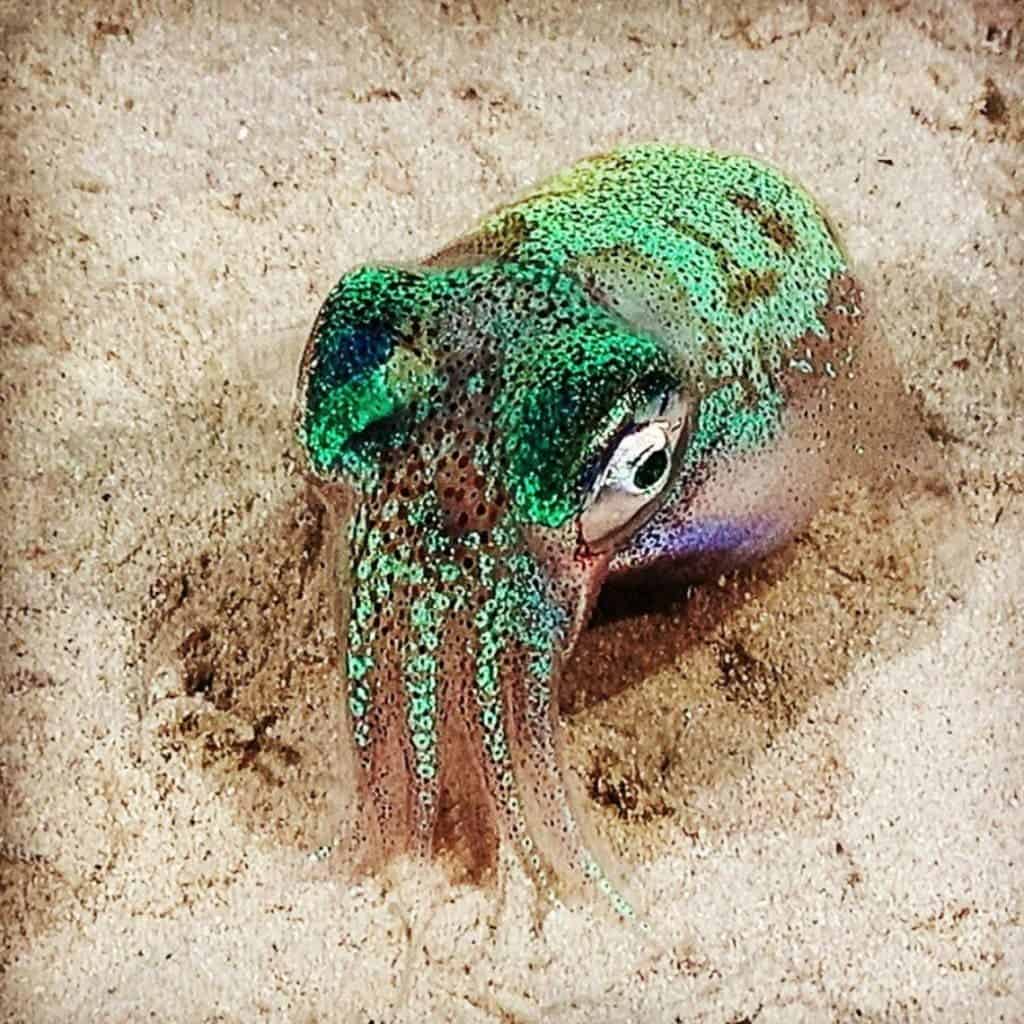The deep-sea isn’t the barren, bizarre environment we once thought it to be. It can be brimming with life, often in unexpected shapes.

Coral gardens
Bremer Canyon Marine Park is already well-known as a biodiversity hotspot. All sorts of whales and dolphins, fish and seabirds, call it home. Marine scientists have been conducting research on megafauna in the area for over a decade, but there’s still much more to discover.
In the most recent survey, researchers at the University of Western Australia teamed up with the philanthropic Schmidt Ocean Institute to explore the deeper parts of the sea — specifically, the canyon itself.
Using the deep-sea remotely operated vehicle, SuBastian, which is capable of sampling depths to 4,500 meters, they set out to explore the depths of Bremer Canyon.

The canyon starts to descend from the continental shelf (at about 200 meters deep) to abyssal depths (around 4,000 meters deep).
The team wasn’t entirely sure what to expect from the canyon floor, although previous surveys suggested that the canyon is teeming with wildlife. They strategically collected deep-sea coral and fauna samples, as well as water and geological samples.
“We have already made a number of remarkable discoveries from the Bremer Canyon,” said Dr. Julie Trotter, the Chief Scientist from UWA who led the expedition. “The vertical cliffs and ridges support a stunning array of deep-sea corals that often host a range of organisms and form numerous mini-ecosystems”.
In particular, the ‘coral gardens’ inside the canyon are stunning hotspots of biodiversity.

The new discoveries are enabling researchers to understand the canyon environment in a new light. For all the studies of Australia’s corals, the deep-sea environment remains largely unexplored. This does not only help biologists understand these understudied ecosystems, but also help conservationists devise strategies to protect this vulnerable life. It’s an important contribution to the broader topic of oceanic life conservation.
Australia is surrounded by three oceans, and all of them have submarine canyons, some of which run several kilometers deep. In addition to living corals, these canyons also have extensive fossil coral deposits — they’re a pedestal-like coral graveyard, which researchers can also study to better understand this environment and how it evolved in both historic and geological time.
Australia has only one oceanographic vessel available for scientific research and no supporting deep-sea underwater robots, which makes this expedition so important and rare.

The waters in Bremer Canyon come from Antarctica, which means the canyon can also harbor important information about processes that regulate our planet’s climate
“This has global implications given these waters originate from around Antarctica which feed all of the major oceans and regulate our climate system” said Professor Malcolm McCulloch from UWA.
Corals are also important in climate studies, as they require specific conditions to survive.
Understanding coral thermal susceptibility has been a central focus of coral studies, especially as climate change and ocean acidification are threatening all the planet’s reefs — including the Great Barrier Reef.

“A particular species of solitary cup coral was found during the expedition. This is significant because we are working on the same coral in the Ross Sea on the Antarctic shelf, in much colder waters”, said collaborator and co-Chief Scientist Dr. Paolo Montagna from the Institute of Polar Sciences in Italy, who was a part of the study. “This is an important connection between disparate sites across the Southern Ocean, which helps us trace changes in water masses forming around Antarctica and dispersing northward into the Indian and other oceans”.






